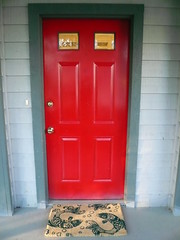I am white. Extraordinarily white - scary white - blindingly white - alien white - glow in the dark white - my family uses my legs to find me on dark nights white. This happens occasionally when Scots, Irish and Welsh genes mix. If I’m out in the sun 12 hours every day for a month, my freckles sometimes connect and make me look like I’m sort of tan, but not. Now you understand why I’m somewhat interested in a good sunscreen.
Below is a compilation of the latest research and tips I’ve picked up over the years on how to keep those burning rays away.
These tips may help:
-The SPF, or sunburn protection factor, measures protection against ultraviolet radiation B, UVB, which causes burning. Once you go over an SPF of 30, the increase in sun protection is incremental. For example, an SPF of 30 filters about 97% of UVB rays, where SPF 50 filters about 98%. But the SPF level doesn't measure protection against ultraviolet radiation A, UVA, which causes aging of the skin, says the American Cancer Society. Both types of UV rays cause cancer. Experts say consumers should look for sunscreens that protect against both UVA and UVB rays, they should say "broad spectrum" or “full spectrum” protection on the bottle.
Coppertone UltraGuard Sunscreen Lotion SPF 90+ covers UVA/UVB, and has non-greasy moisturizers and Vitamin E. $10; drugstore.com
- The SPF testing system may not accurately measure anything above SPF 50, according to the Food and Drug Administration. The Skin Cancer Foundation, which promotes sun protection, says that in most cases, "SPFs beyond 50 are unnecessary."
- The American Academy of Dermatology recommends both adults and children use a sunscreen with an SPF of at least 30.
- Babies under 6 months shouldn't get any direct sunlight, according to the American Academy of Pediatrics.
- It may be even more important to use enough sunscreen. Most people get much less sunburn protection than the product is marked simply because they don't use enough. The average person needs about 1 ounce of sunscreen — enough to fill a shot glass — to cover the body.

- Don't be fooled by the product stating it's waterproof. You MUST reapply after water exposure or sweating or every 2 hours while outdoors.
- Did you know you can actually get a sunburn through fabric? Oh yes, you too can be a red mess even after wearing a wet, clinging, dripping, really attractive t-shirt on the beach all day.
I’d post a picture but you really don’t want that stuck in your head.
- Wear light colored long sleeves, long pants, a hat with a brim of at least 4” all the way around and sun glasses. Sunscreens can rub off or wash away over time. Most cloth has a SPF of 4 (when wet 0), but clothing labeled UPF 50, or ultraviolet protection factor 50, offers long-lasting protection against UVA and UVB rays.
- Rather than search for and buy special clothing (hard to find and can be expensive) you can have the convenience of washing some SPF 30 protection right into your own clothes. There’s a product called Sun Guard Laundry Treatment UV Protectant. You simply add a single packet of it into your washer along with your regular laundry detergent and the clothing is coated with the SPF 30 that will last through 20 additional washings!

- You still need sunscreen and/or protective clothing but seek shade whenever you can under umbrellas or shade trees. Remember, shade protects people only from direct sunlight, not the ultraviolet rays reflected up from the sand or pavement.
- Sunscreens can be an issue in sensitive ecosystems, such as coral reefs. A portion of sales from eco-friendly Reef Safe sunscreens goes to the Ocean Futures Society.
Reef Safe Sunblocks and Sprayables are biodegradeable and nontoxic to sea life. $6-$10; reefsafesuncare.com
- If you have sensitive skin, the minerals titanium dioxide and zinc oxide are often less irritating than other blocking ingredients. Also pick a sunscreen without potential irritants like fragrances or oils.
Neutrogena Healthy Defense Daily Moisturizer SPF 50 Sensitive Skin is fragrance-free, with 100 percent naturally derived ingredients. $14; neutrogena.com and is one good choice.
- For more choices check out http://www.dermadoctor.com/dermawizard.asp, which can help you find the best product for you if you have sensitive skin, allergies, or are taking medications that might make you so.
I wish you a safe, healthy, golden glow and may you not look or feel like a large, overdone lobster when you come home from the beach
(something else I have vast experience with).
-Susan
I researched most of the information in this blog post from the web sites and articles below:











No comments:
Post a Comment
LOVE to hear from you!